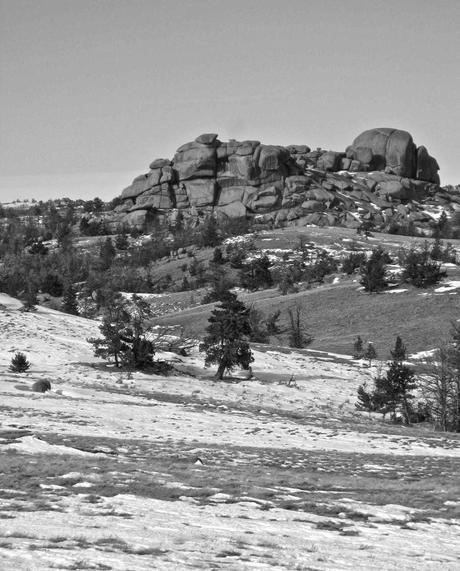 Much about Vedauwoo is mysterious, including its name. Vee-dah-vú is said to be an Indian word meaning earthborne spirit, but no one knows which tribe called it that, if any.
Much about Vedauwoo is mysterious, including its name. Vee-dah-vú is said to be an Indian word meaning earthborne spirit, but no one knows which tribe called it that, if any.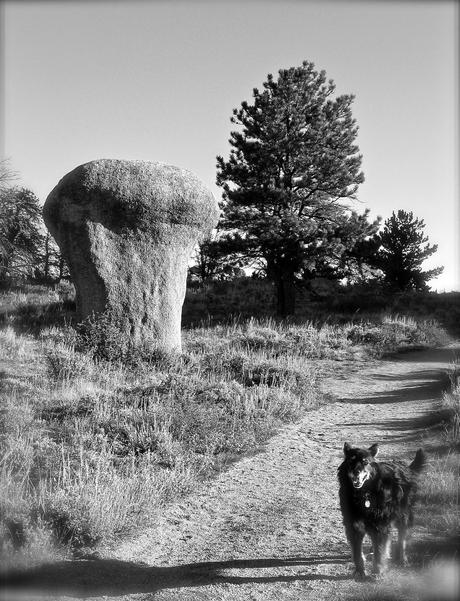
Curious granite mushroom.
Vedauwoo is inhabited by tors -- odd rock sculptures that defy understanding. In the early days of my blogging, I naively chose Vedauwoo tors as a topic. It took me quite a long time to put something together, and in fact I ended up with three posts: Creatures of Stone, Creatures of Stone II -- genesis, and Creatures of Stone III -- the rest of the story?
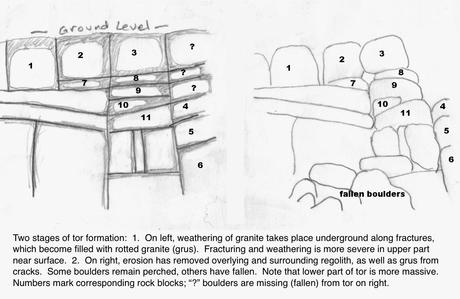
Two-staged tor formation; click on image to view.
The tors are made of Proterozoic Sherman granite. It was emplaced 1.4 billion years ago, but it’s not clear how nor why. It’s close to and appears to be associated with the Cheyenne Belt, a continental suture created when the Yavapi province, a collection of island arcs, collided with the Archean Wyoming Craton (below). The suture may have provided a zone of weakness for mantle-derived material (the granite) to be emplaced near the surface (Frost et al. 1999).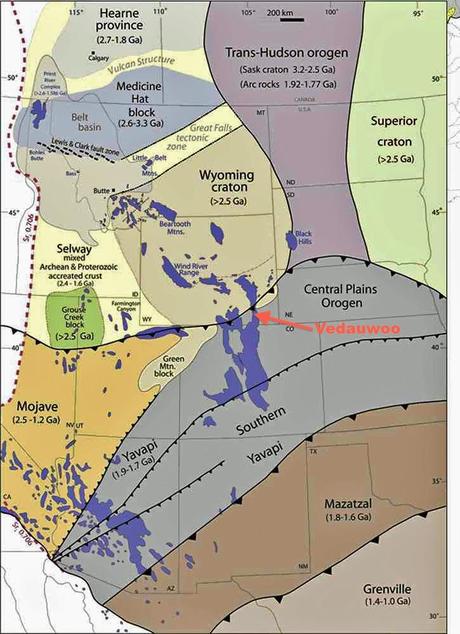
Vedauwoo is just south of the Cheyenne Belt, where the Yavapi province was accreted to the Wyoming craton (map courtesy Written in Stone).
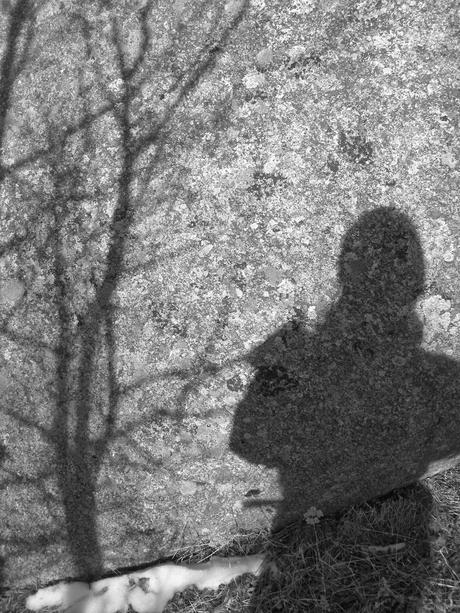

Bold shapes,
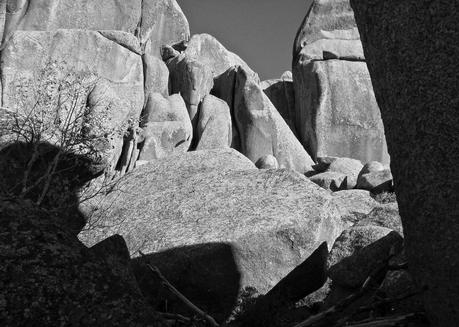
strong contrast in light,
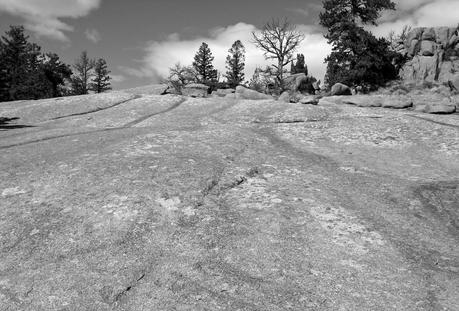
unusual perspectives,
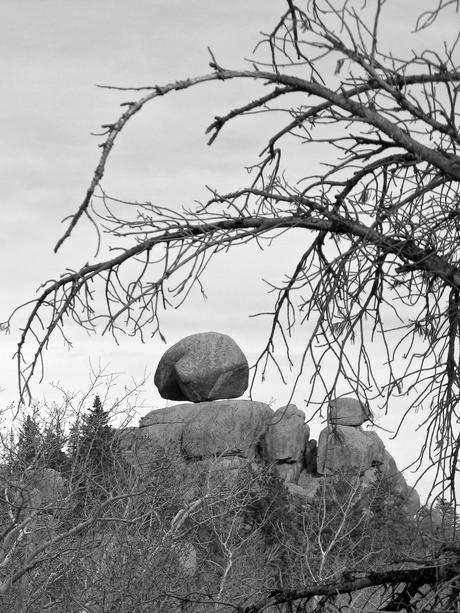
and odd arrangements -- all are common at Vedauwoo.
There’s general agreement that one should think in black-and-white, shoot in color, and then convert to black-and-white in post-processing. That’s what I’ve done so far. My post-processing is simple, all in iPhoto. I reduce saturation (color) to zero, and often adjust light and shade with the histogram. Sometimes I increase definition. This works pretty well, but one of these days I’m going to try a high-contrast setting on my camera when I shoot in color for black-and-white.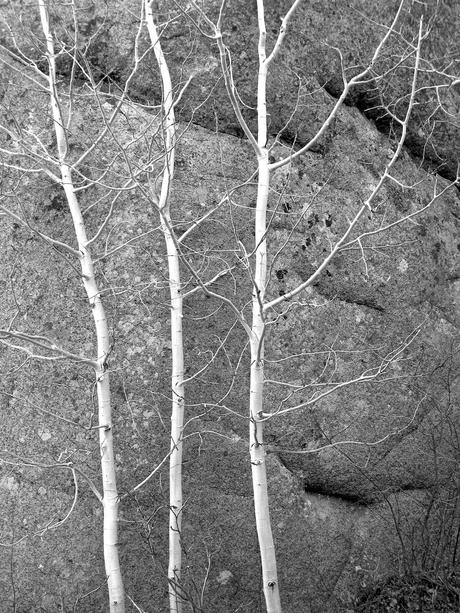
Quaking aspen against Sherman granite.
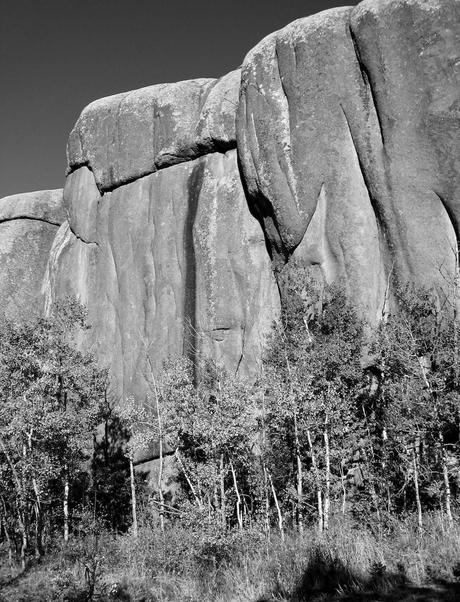
More aspen -- with leaves.
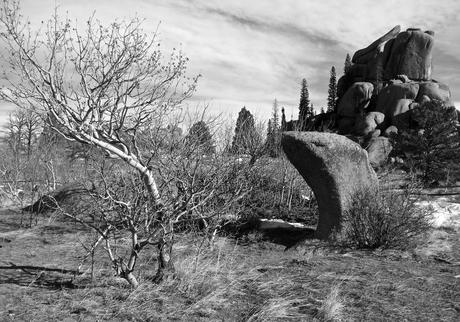
Small aspen and a tiny tor dance in the wind.

Where does this mysterious trail lead? east of the moon? west of the Sun?
For more on black-and-white photography, see Centennial in Black and White.
Literature Cited
Frost, C.D. et al. 1999. Petrogenesis of the 1·43 Ga Sherman batholith, SE Wyoming, USA: a reduced, rapakivi-type anorogenic granite. J. Petrology 40:1771-1802.
